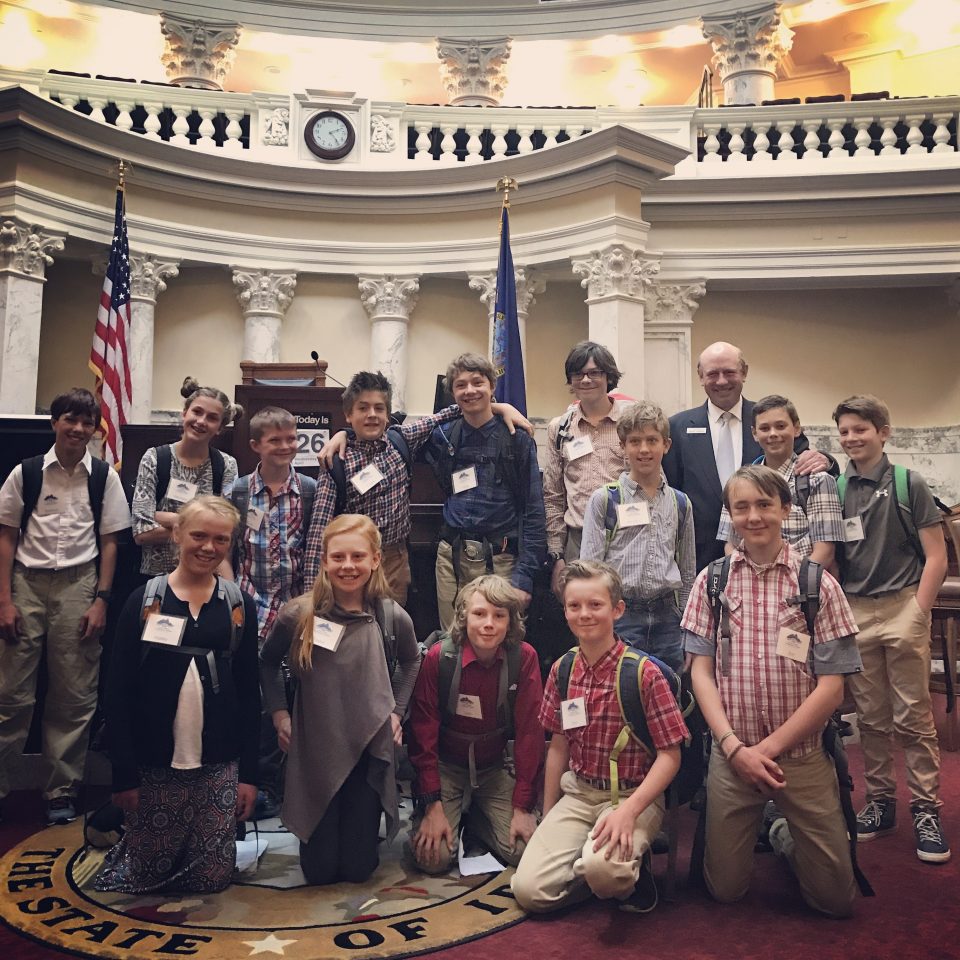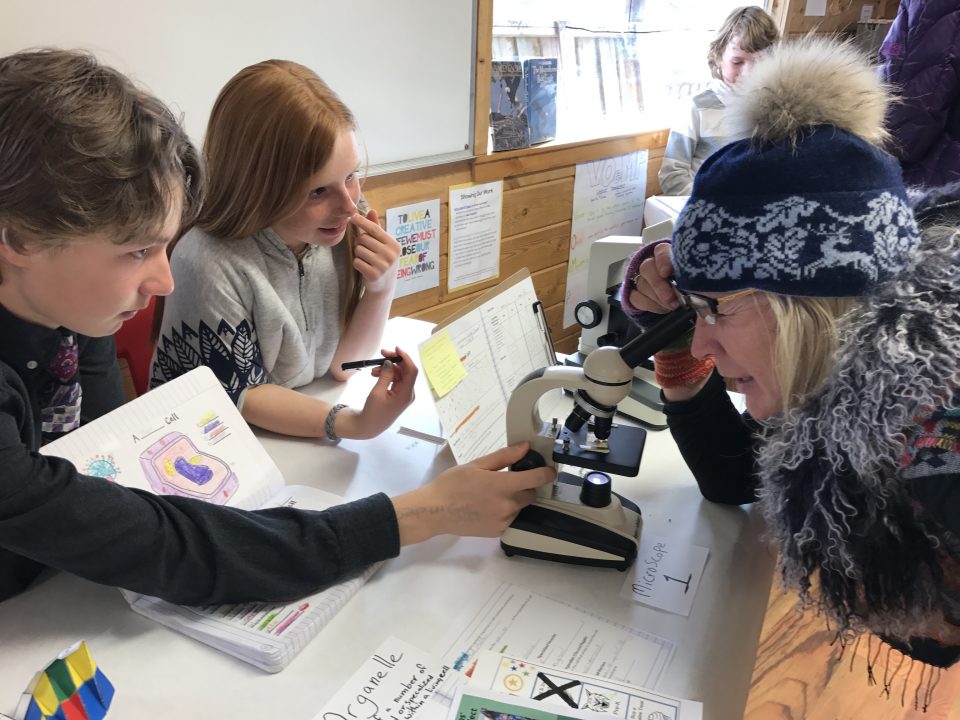Driving Question
5th through 7th
What PBE Principles were highlighted in this project?
Community as Classroom, Learner-Centered, Design Thinking, Inquiry-Based, Interdisciplinary
Project Description
From an interest in ancestry and animals, the Olympians chose to study biology. This emergent, learner-centered unit started with what students know and wanted to know. The regional community served as our classroom, encouraging us to bring together biology and social studies in an interdisciplinary unit. Our destination was the capitol building in Boise on April 26th where students presented their highway sign proposal to State Senator Mark Harris and advocated for avian health in the Snake River Watershed.

To get there, they investigated genetics, cell biology, and anatomy, researched the human impact on Bald Eagles, and developed a solution in Teton Valley: Clean-Up the Roads Day on April 19th. They also created a model that they advocate adding to the existing Adopt-a-Highway signs in the state. They built knowledge and skills through inquiry and developed skills and dispositions through student-driven Design Thinking.

In addition to the PBE principles, this is a Place-based project built and implemented using the element of Project-based Learning. We used all seven gold-standard PBL elements throughout this project!
How did this positively impact community? How was it shared?
This project focused on an environmental challenge in students’ local and regional communities. We produced a campaign to reduce roadkill by decreasing road-side pollution. Students connected with politicians and regional government as they sought to share their learning and use what they learned and analyzed to improve avian health.
Students also engaged their immediate communities by inviting their town to the clean-up day they planned — including hosting the day of, as well as preparations that included phone calls, phone call practice, required forms and waivers, and a media campaign to promote the event — and connecting with younger students at their school as part of throughout the project.
Reflection
The “down moments” in the project were the biggest challenge. What I mean by “down moments” is that in any excellent, months-long project (PBL in nature), there are always lulls that can either be welcome challenges or, at times, unwelcome. We had one particular unwelcome challenge in this project, after building initial background knowledge around biology (we did a month of basic introductions to cell biology, anatomy, and genetics) when students weren’t sure what direction to go next and they wanted teachers to direct them. This felt like an unwelcome challenge because as the teacher I wanted to say, “remember, you’re in charge! You get the voice and choice! What should we do with our learning?” but that didn’t feel like an encouraging approach.
Instead, I took a step back and then decided that we should spend a few class periods talking about what we had learned and what we wanted to DO with that learning. It turned out that that process was exactly what students needed…to take a breath, step back, and think before moving forward with making some decisions. From there, we took this amazing turn to bald eagles and then more broadly raptors and then raptor safety in the Snake River Watershed…and the rest is history…!
To be honest, the WHOLE project was so rewarding. The ebbs and flows are truly what make a project rewarding, even with the challenge I mentioned above, because it is all about the process and not necessarily the destination. That said, this project also happened to have an amazing student-driven “Final Product” and that is what I will call my most rewarding piece. Here’s an excerpt from our classroom newsletter from that week that I think explains the most rewarding aspect well. (Please note our class name was the Olympians – it was a student-created class name.)
“Last week, our class traveled to Boise for our Spring Expedition. We spent the week traveling through a large portion of the Snake River Watershed staying in both tents and hotel rooms. This trip wrapped up our biology project while setting the stage to take action! As part of our week-long student-initiated trip, we visited the State Capitol Building to present a petition we created and to convince our State Senator, Mark Harris, to help us to add signage below the existing Idaho adopt-a-highway signs. Approaching the dome of the Capitol Building, nerves were at an all-time high. Taylor’s (6th grade student) reflection describes the scene best: Our next stop was the Capitol Building to present! I was so nervous. We all got on our fancy shoes and nametags, hiked up the stairs and met Senator Harris. He took us down to the basement and into the room we would be presenting in. O.M.G! There were audience chairs, a half circle of desks with huge chairs, and mics! There was even the Seal of Idaho on the wall! We each sat at a desk in a huge black leather chair, in front of a microphone in a huge room in the Idaho Capitol Building. The Olympians composed themselves and delivered a clear and persuasive presentation to Senator Harris. Using all we have learned, practiced, and produced over our three-month biology project, the Olympians were able to get Senator Harris to agree to help them to create an avian-awareness sign that reads, “Keep your Wrapper, Save a Raptor.” We look forward to our next steps in this process with Senator Harris’ guidance.”


